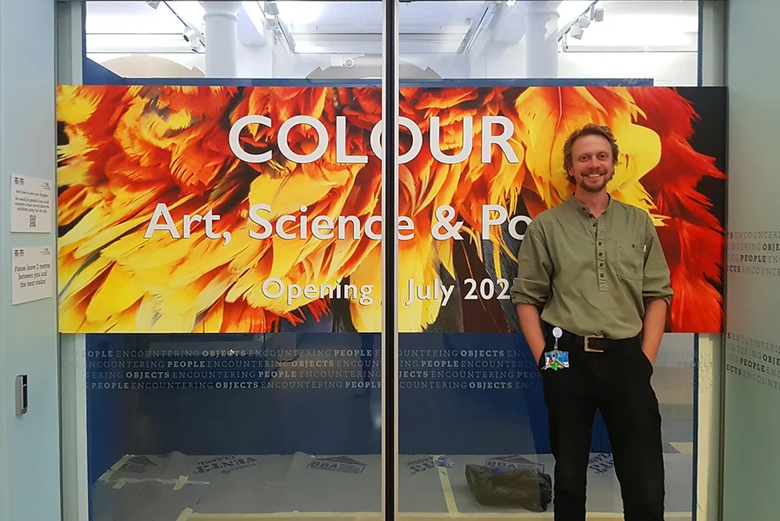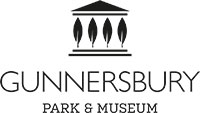In this blog series, we'll be interviewing some familiar faces around Gunnersbury. Next up is Tom Crowley, Senior Curator: Exhibitions
Dr Tom Crowley is Senior Curator: Exhibitions at Gunnersbury Park Museum, covering the maternity leave of Julia Tubman. He’s travelled through the Hindu Kush and studied ancient history, but his real focus is on the people who will visit his exhibitions at the museum.
You’ve got a varied and fascinating CV - tell us a bit more about what you did before you came to Gunnersbury
I grew up in Camberwell, south London, and I’ve always been fascinated by the past, even as a small boy. I loved going to the Horniman Museum and visiting the Saxon Shore Forts. Apparently one of my earliest words was “hanpup,” which was my attempt to say “helmet”. I really enjoy the idea of entering a different space, somewhere completely unlike our own world and encountering people from the past who were so different and yet so similar to us. History gives you such scope for imagination.

What about your academic and professional life?
I studied archaeology at Edinburgh University and then, after I graduated, I backpacked around Pakistan and the Hindu Kush. Not only is the scenery spectacular, with some of the highest mountains in the world, but the people are incredibly friendly and hospitable. There weren’t many western visitors at that time because it was shortly after the World Trade Center attacks of September 2001 and so I think the local people were quite intrigued by me. When I was travelling around, I found myself stepping into their lives and even getting invited to their weddings.
You came back and worked at the White Cube gallery, which is famous for artists such as Damien Hirst and Tracey Emin. That must have been quite a change for an academic and backpacker?
Yes, it was! I worked as a technician so learnt all about technical production, which has been very useful. We were also sending off pieces to buyers that had been produced by the artists’ studios and so it was a bit of a conveyor belt – packaging up Damien Hirst spot paintings, for instance – and very much a commercial business. It some ways it was the antithesis of art. But the people were really fun, and I learnt a lot of essential practical skills there from working on the gallery’s permanent collection and arranging for the transport of works of art.
Next it was back to another museum – the Horniman Museum, this time?
That’s right. I was working on the South Asian and Middle Eastern sections. Like a lot of museums, the Horniman only has a fraction of its collection on display – something like four per cent of all the artefacts that it owns. My challenge was to present what we didn’t have room to display in a new way that would be more engaging and interactive. So, for instance, in our workshop about Tibet and the Tibetan diaspora we introduced food tastings, and we made things such as ginger sweets and caramelised ginger for visitors to try. We also had on display these very unusual 17th century gingerbread moulds, which featured images of soldiers attacking towns – not exactly like the bunny rabbits and flowers that we associate with biscuit and baking moulds.
I then did my masters at SOAS while volunteering at the British Museum, in the Department of Africa, Oceania and Americas. I did my PhD at Cambridge University. Partly because I’d travelled around the world and loved it, the subject of my thesis was the North-West Frontier of Pakistan and, in particular, the Kalasha people who were the last followers of a pre-Islamic religion.
While I was at Cambridge, I worked on an exhibition at the Museum of Archaeology and Anthropology, which is part of the university, called COLOUR: Art, Science & Power. It’s still on and continues until 23rd April. We used science, humanities and anthropology among other disciplines to look at everything from medieval manuscripts and ancient Egyptian figures to African sculpture and Amazonian feather headdresses.
How do you go about putting together an exhibition?
With COLOUR: Art, Science & Power, for instance, in effect I was co-producing it with the local community and bringing in people who had some lived experience of the issues around colour that we were exploring. As curator I see my job as facilitating a conversation between the research community on the one hand so that we can base the exhibition on accurate research. But then, on the other hand, we also need to bring in people who might have personal, lived experience of what we’re exploring plus people who can help with the teaching, learning and communities’ aspects – so what you’re trying to achieve is a wholistic approach to creating an exhibition... you want an exhibition which people will engage with in lots of different ways. We’re always thinking about how visitors can interact with the displays and how they can learn something from what they see.
It sounds as if there’s more of a focus these days on what audiences and visitors want from an exhibition than there used to be?
Yes, definitely. There was a time when exhibitions were about the curator saying, “Look, I’m the expert.” But that’s all changing – now we still need that academic rigour but it’s also about being very much audience led, because we actually want to be relevant to an increasing number of people. There has been a slow realisation across the sector that there are not audience groups that are ‘impossible’ to reach so much as audience groups that museums haven’t really tried to reach or make themselves relevant to. Then there are the technical and creative team members who will make it all work in practice when they fabricate the exhibition. Their skills and input are also really important when to comes to realising an exhibition which works for visitors.
Do you learn from the visitors and get feedback from them?
This is really important, partly because we want to attract new, more diverse audiences as well as existing visitors, we want to engage people who haven’t previously been great fans of museums. We want to hear their views – and we want to be able to represent them. We carry out surveys so that we’ve got solid data that we can use to plan exhibitions and tell stories that resonate with the audiences we want to reach. For a museum such as Gunnersbury, for instance, developing those close relationships with visitors and being able to tell stories about people who live locally and to put people first in our exhibitions is essential. It’s one thing that I really love about my job as a curator.
